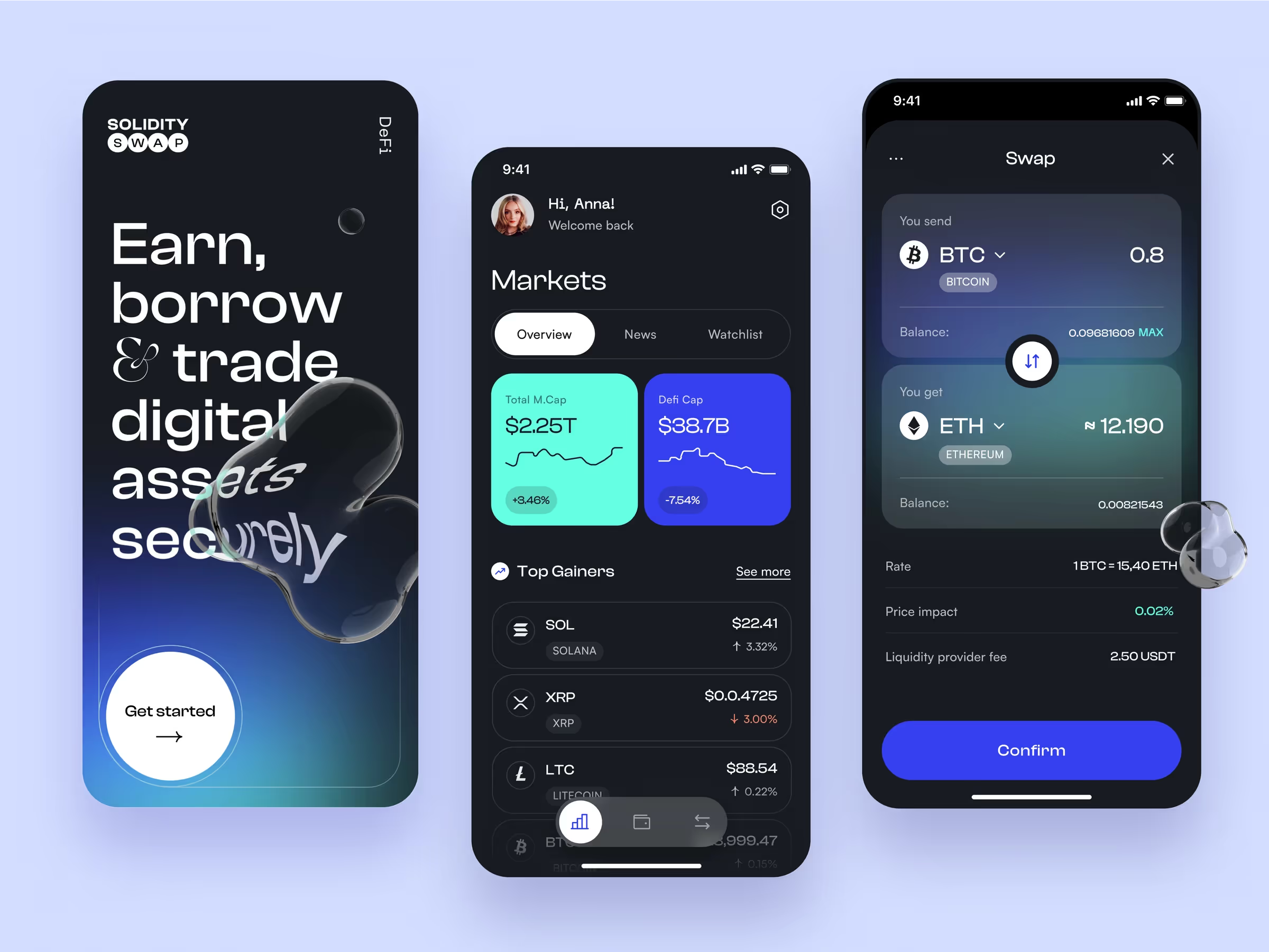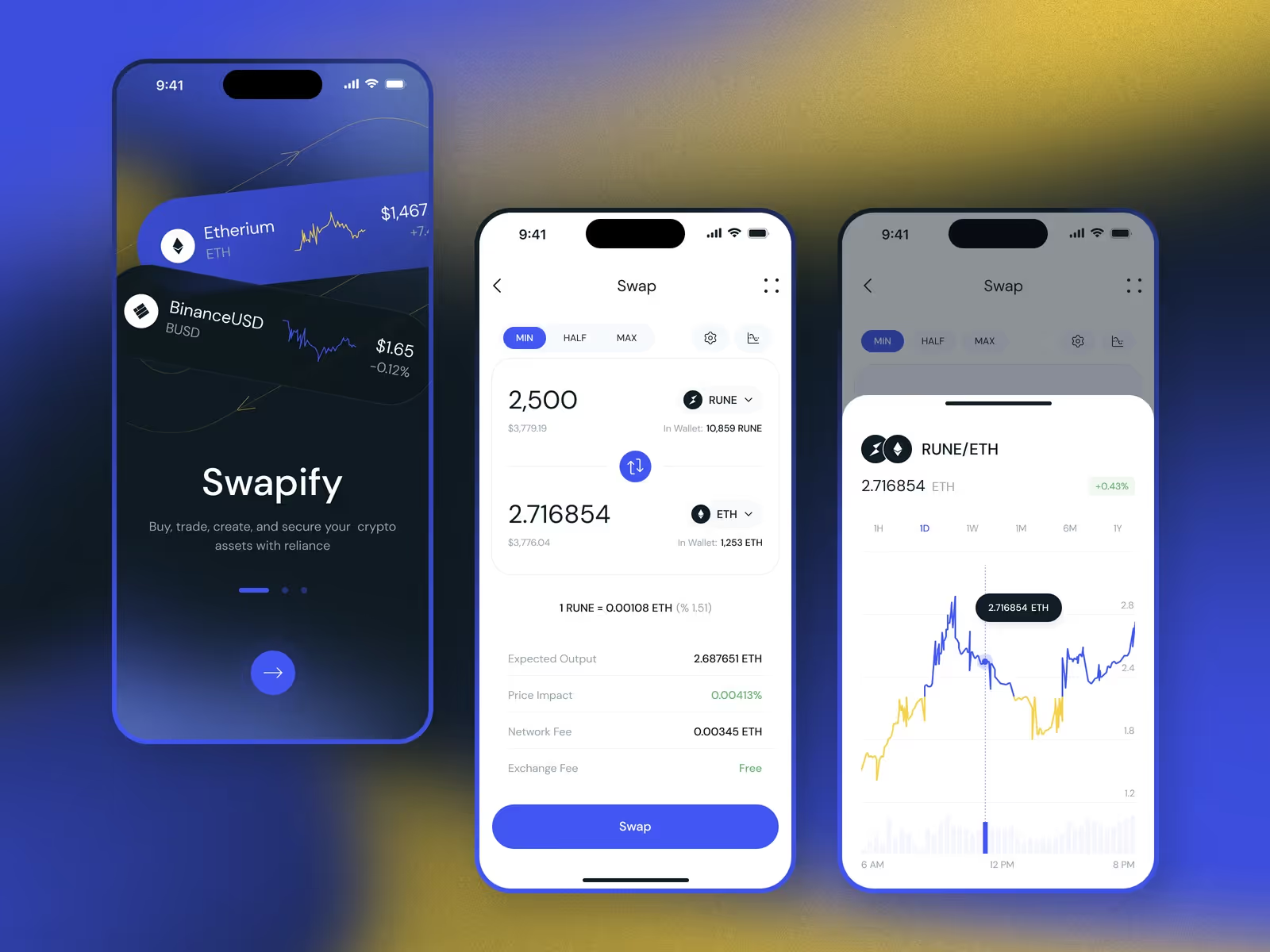If you are ready to enhance your web design with expert solutions, let’s talk!
Blockchain technology has emerged as a groundbreaking innovation, revolutionizing various industries. As spending on blockchain solutions continues to grow, the UX for the blockchain ecosystems draws increasing attention.
Since Arounda has extensive experience creating Web3 solutions, we know that designing a great UX for blockchain has particular challenges. So, in this article, we will explore the critical considerations in this regard.
The Importance of UX for Blockchain

A strong focus on UX is critical to driving user adoption and engagement. Human needs, capabilities, and limitations should be the central consideration in blockchain design. Here's why.
Simplification
Blockchain concepts, such as decentralized networks, cryptographic keys, tokens, smart contracts, etc., take much effort for the average user to comprehend. UX design simplifies these complex terms, making them understandable.
Error reduction
Poor design leads to costly errors in the blockchain context, such as the irretrievable loss of tokens. A good UX design guides users through these processes and prevents mistakes.
Trust and confidence
Due to the anonymity of blockchain transactions, users must have absolute confidence in the platform. A well-designed UX makes platforms more transparent and predictable, building user trust.
Competitive advantage
A good UX can be a significant differentiator as the blockchain space becomes more saturated. Blockchain platforms providing superior UX will likely attract and retain more users.
Swift transition
Many blockchain applications are new forms of existing services (like finance, supply chain, or social media). UX helps facilitate this transition by keeping familiar elements in the interface and operation. It makes mastering new tools easier and increases customer acquisition.
Reducing the need for support
A well-thought-out UX reduces the need for user support. When users can find what they need and complete tasks without seeking help, they're more likely to continue using a product and engage deeper.
Adaptability
Blockchain technology is rapidly evolving, and a UX and UI design must adapt to these changes. A design that can easily incorporate new features will drive the adoption of the latest blockchain technologies.
How to Design a Better UX for Blockchain?
The decentralized nature of blockchain and complex terminology often results in difficult-to-navigate interfaces. However, by emphasizing user-centered design principles, designers can prevent this. Here are the key points to improve UX for blockchain technology:
Point 1: Work with the audience
As a UX designer, you know much more about your product than anybody else. But while you may find your product easy to use, it may not be the case for others. Therefore, you must research as many opinions and requests from others as possible.
Each blockchain app caters to specific user groups, such as investors, developers, or casual users. Identify the target audience and analyze their behavior to gain valuable insights.
Once you have collected data through surveys, interviews, and usability tests, it's time to analyze and distill the findings. Strive to create a seamless and enjoyable UX that instills confidence in your blockchain application.
Point 2: Intuitive and consistent interfaces
While blockchain technology may be complex, the user experience doesn't have to be. The UI should ensure a smooth journey.
To make this possible, every screen, every element, and every interaction should align and feel connected. This consistency goes beyond the appearance, and it covers functionality as well. The controls and labels should be consistent throughout the platform.
For a compelling user experience, aim for a simple and clean interface. Start by focusing on the most critical components and actions that users will engage with frequently.
Familiar design is a powerful tool for enhancing the UX for blockchain platforms. Leveraging established patterns will shorten the learning curve and enhance the user experience.
Color scheme, typography, and iconography should also remain uniform throughout your platform. This consistency will make a user interface intuitive and reinforce your brand identity.
Point 3: Simply onboarding process
In the blockchain, customers often confront intimidating technical complexities. Thus, onboarding becomes the first crucial interaction between users and applications.
UX best practices suggest offering a straightforward registration and login experience. Users should feel supported and educated. Also, step-by-step instructions can be beneficial.
Consider employing tooltips, pop-ups, or walkthroughs to guide users through complex processes. Interactive guidance can significantly help users. The optimal variant is a short explanatory animation. Visual demonstration of the interaction between abstract objects maximizes perception.
Replace technical jargon with simple, everyday language. It doesn't mean diluting the content but communicating important information more effectively.
Point 4: Security and trust
While designed with inherent security protocols, blockchain applications can still be vulnerable if poorly managed at the user end. Therefore, in this context, UX design should enhance security and trust.
One of the essential aspects to focus on is communicating security measures to users. They should be aware of the available security features and protocols.
Visual indicators like lock icons or color changes can serve as intuitive guides for users. It helps them understand when they are carrying out secure transactions. Displaying transaction confirmations visually appealingly reassures users and builds confidence in the platform.
Challenges in UX Design for Blockchain

UX design for blockchain platforms can be particularly challenging due to several factors:
Balancing security and usability
Blockchain has a high level of security, but the mechanisms for ensuring it can sometimes compromise usability.
Interoperability and standardization
Different blockchain platforms have varying standards, which can create inconsistencies in the UX. Creating a unified experience across these different systems can be challenging for a designer.
Legal and regulatory considerations
The legal status and regulations around blockchain technology and cryptocurrencies vary widely worldwide. UX designers must know how these factors might impact user interactions and expectations.
These are just a few challenges UX designers may face when designing for blockchain applications. As with any emerging technology, designers must continue learning and adapting. For blockchain technology to become truly widespread, it is necessary to strongly emphasize UX design blockchain.
Summary
Well-thought-out UX for blockchain brings its revolutionary potential to the fore. The success of blockchain depends not only on the technology but also on the quality of the user experience it provides. After all, the technology is only as revolutionary as its implementation. With a well-crafted UX and UI, blockchain can genuinely make that breakthrough.
Using the above strategies, designers can bridge the gap between the potential of blockchain and its practical realization.
Arounda has been creating intuitive and inclusive blockchain UX for over five years. Contact us if you want to develop a cutting-edge design solution for blockchain business.














